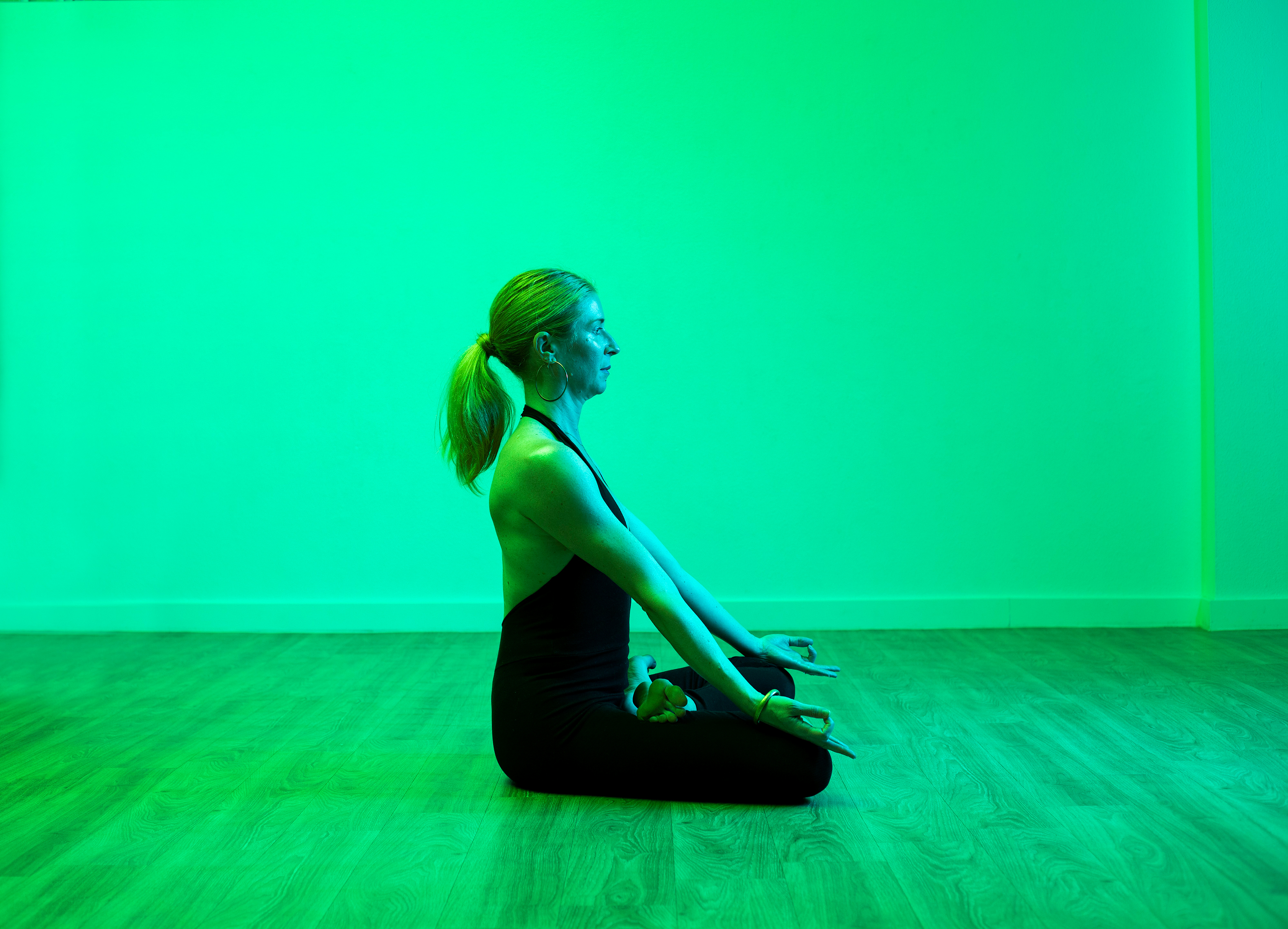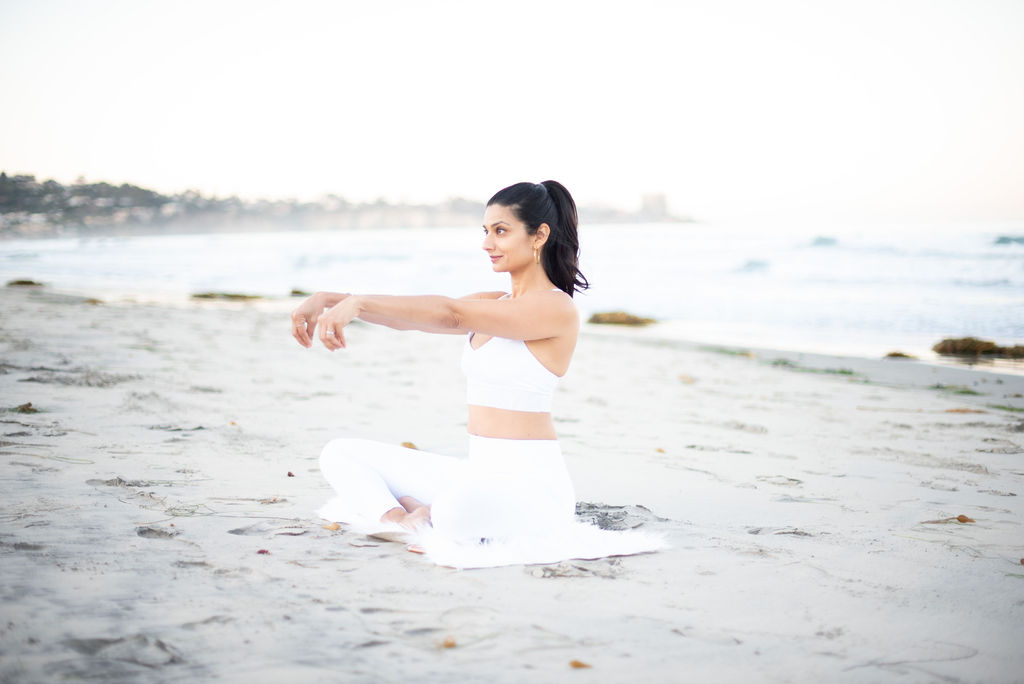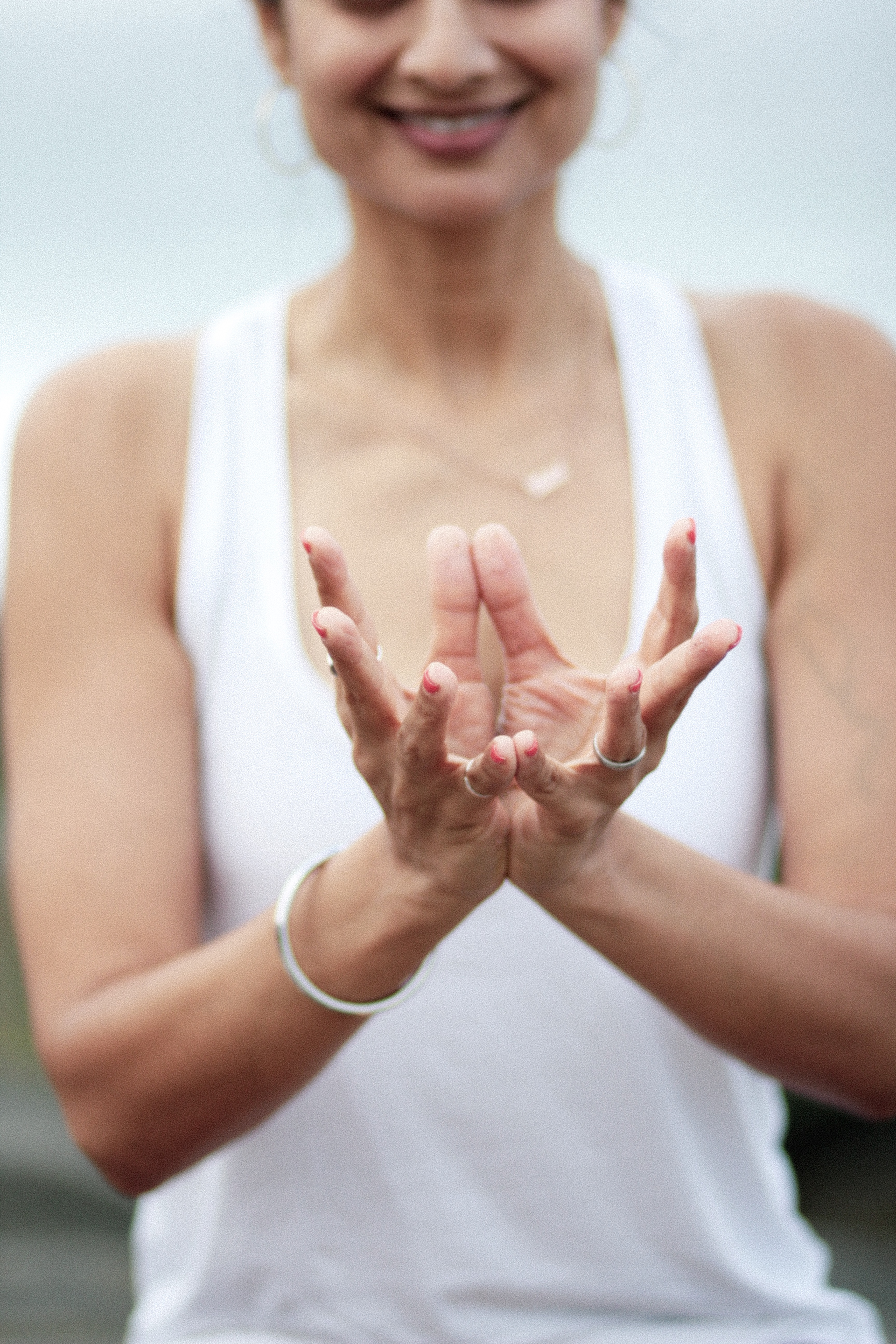
Kundalini yoga classes are very different than the hatha or vinyasa classes you may have attended at the gym or your local yoga studio. Breath is an important component of all styles of yoga but it utilized differently in kundalini.
Hatha and vinyasa yoga classes are a series of movements that link to the breath. These movements are designed to stretch and strengthen the entire body in a balanced way. The teacher creates classes based on their experience and what they think is best for the students in the room.
Kundalini Yoga Classes Are Based On Kriyas
There are many books about kundalini that contain kriyas. Kriyas are set sequences of breath, movements, mudras (hand gestures), drishti (eye gaze) and often times chanting, or mantras. We practice kriyas as a way of maximizing the flow of energy through our chakra system.
Kundalini comes from the Tantric System of yoga. This system recognizes an aspect of yogic philosophy known as our subtle anatomy. Our subtle anatomy in yoga is a complex system comprised of our chakras, energy channels and the life-force that flows through it.
Kundalini and Subtle Anatomy
Kundalini calls the highway of energy channels in our bodies nadis. Much like the channels recognized by Chinese Medicine, energy is thought to move through these channels. Kundalini practices maximize the flow of this energy through our system. Yoga refers to this energy as Prana.
The ida, pingala and sushumna are the three main energy channels. The ida represents the female polarity (passive, moon, receiving) while the pingala Nadi represents the male polarity (active, sun, giving). The sushumna Nadi runs from the very base of the spine through the crown of the head.
Along the spine there are 7 main chakras: muladara, svadhistana, manipura, anahata, visshuda, ajna and the crown chakra. The ascend from the perineum all the way up to the crown of the head. Kundalini believes in an 8th chakra known as our aura, or our electromagnetic field.
Maximizes Your Chakra Potential With Kundalini Yoga Classes
Kundalini yoga classes maximize the Prana flow through all of our energy channels as well as through the chakras. Some believe that the sushumna nadi pierces each chakra from base to crown while the ida and pingala nadis intersect at each chakra in a figure 8 form along to spine.
The chakras are a comprehensive representation of our experience as psycho-spiritual beings. Each chakra, or energy center, has distinct characteristics and represent different aspects of our selves. The whole is greater than the sum of its parts and their interconnectedness paints a full color tapestry of the human experience.
Relax and Allow Kundalini Yoga Classes To Do Their Thing

You don’t need to know anything about chakras to get the benefit of kundalini. Kundalini yoga classes have powerful effects on the nervous system that are felt immediately. An energetic calm will pervade the system and you may feel things you have never felt before.
Some report feelings of intense calm while others might feel a surge of energy that is both uplifting and transcendent. You don’t need to try to accomplish anything specific, just do the kriya as it is prescribed and allow the changes to naturally occur.
You can expect any of the following during a kundalini yoga class
Pranayama, or Breathwork
Pranayama translates simply as “control of the breath.” Kriyas always prescribe a specific type of breathing. It might be very simple such as “long deep breathing.” Or it may call for something more intense such as breath of fire.
The teacher will give explicit instructions for how to do the breathing. If at first it’s confusing or difficult, just do the best you can. As you practice more and more kundalini you will become more familiar with the different breathing exercises.
Simple Yet Repetitive Movements
Kriyas often class for simple repetition movements such as leg lifts, holding the arms out at a specific angle or sitting in a certain way. The movements and breath will be held for a specific length of time. These times range from three to sometimes as long as 62 minutes.
At first these long holds may be extremely difficult to carry out. This is part of the mental benefits of kundalini. Despite what the mind may tell you, the body is quite capable of holding the arms out for extended periods of time.
Firstly, it’s always okay to take a break, but eventually try to push through this mental anguish to get to the “other side.” However it is safe to dig deep mentally to get through physical discomfort as long as you don’t have an injury. As a result, you will experience subtle yet far-reaching benefits that are hard to describe until you experience them for yourself.
Chanting or Mantra
Many kriyas include mantras to chant for a set amount of minutes. Mantras are chanted both internally and externally. Let go of your inhibitions and don’t be afraid to belt out a a beautiful Sanskrit chant. You’ll feel a euphoric high that is impossible to find any other way.
Mudras and Drishti
Mudras are hand gestures where you place the fingers in a certain way. Drishti is a soft eye gaze focused on a particular place, usually the tip of the nose or the third eye. Both drishti and mudras promote focus and presence of mind.
Kundalini Yoga Classes Live and On-Demand

If you would like to try kundalini, yourBuddhi is the perfect place to start. Tune in live every Monday with Sheel and Saturday with Jon at 10am, PST. You can also take an online kundalini yoga class any time on our classes page. With over 50 classes, you have a wide variety to choose from.
If you aren’t a member yet, sign up and get your first two weeks free.
Feel free to email us with any questions that you have and we will get right back to you.

Leave a Reply
You must be logged in to post a comment.